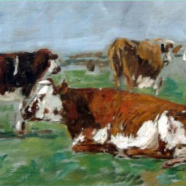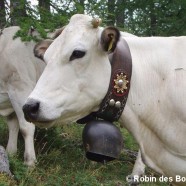Trash cows
All the studies agree. Cows grazing grass, eating hay and corn silage swallow metal and plastic waste. These ingestions cause tumors, infections, fatal diseases.
In France, Interbev (Interprofessional Livestock and Meat) estimates that 60,000 large bovines suffer from tumours and infections caused by the accumulation of waste in their rumens. These 60,000 victims have been partially or totally seized from slaughterhouses and in the later case, the meat was not at all marketed. It is likely that the number of cows affected by this “waste disease” is higher than the official figure, and that deaths before arrival at the slaughterhouse are not quantified. The symptoms of “waste disease” are not specific and can be misattributed by farmers and veterinarians to other maladies.
Aprochim: The Countryside Factory
Following the alert at the beginning of 2011 on the passing of the health threshold by PCBs and dioxins in a sample of milk, the investigation broadens to a perimeter of 3 km around Aprochim, placing today under total or partial isolation the livestock of 8 agricultural farms at Grez-en-Bouère and at Bouère in the Mayenne region. The quasi-totality of the investigation concerns the meat and the fat from meat. For the milk, the situation is fluctuating and to this day the commercialization of the production of only one farm is suspended. The chicken factory farms are not touched, but the official report must be consolidated when the chickens are liberated from their cages in the springtime. On the other hand, the diligent research by the Regional Agency of Health shows that eggs in domestic backyards contain PCB and dioxin levels superior to the national average. The geographic logic of the contamination designates Aprochim as principally responsible.
When the cows turn into radioactive waste
As part of the work of CODIR-PA(1) aimed at drawing up a post- nuclear-accident doctrine in France, the case of herds producing milk or meat contaminated beyond the maximum admissible norms was examined. Two ideas were considered:
– 1 Slaughter the herds. The Veterinary Services Department recommends burying the carcasses on the spot in pre-selected locations that do not expose groundwater and surface water to radioactivity migration. The VSD has had some experience of this procedure during outbreaks of disease.












